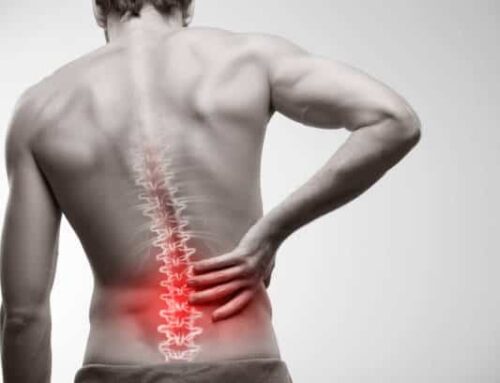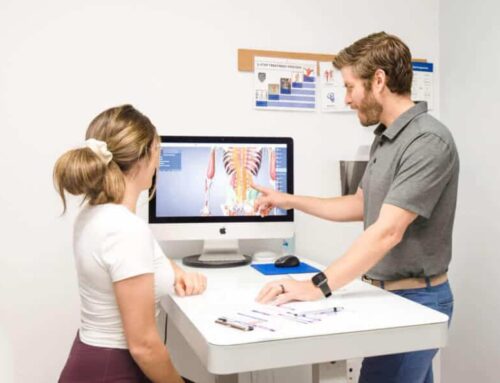Back pain shouldn’t be a given in weightlifting, yet for many lifters, it can feel like the unavoidable price of staying strong and active. You push forward, chasing new goals, but that nagging discomfort keeps holding you back. Sound familiar?
The frustration of back pain is real, especially when it seems to appear out of nowhere. And naturally, when you feel pain “right here,” it’s tempting to focus all your energy on that spot. But here’s the kicker: the real source of your discomfort often isn’t where you feel the pain.
Traditional treatments often miss the mark by zeroing in on symptoms, without addressing the underlying cause. Tight muscles, poor form, or instability might be the culprits—but these issues don’t just appear for no reason. So why are they happening in the first place?
If you’ve been struggling with back pain despite your best efforts, it’s time to look deeper. Let’s explore the true causes of your pain—and how you can finally resolve them for good.
The Real Issue: How Your Brain and Body Communicate
You’ve probably heard it before: “Strengthen your core” or “Stretch your hips.” But that advice only scratches the surface. The real question is: Why does your core feel weak or your hips feel tight in the first place? It’s often less about the muscles themselves and more about how your brain interacts with them.
Rewiring Neural Pathways for Lasting Relief
Your brain controls which muscles activate and when. If the neural pathways to stabilizing muscles like the multifidi, diaphragm, pelvic floor, and transverse abdominis aren’t firing correctly, your body will compensate. This leads to poor movement patterns, increased strain, and eventually, pain. Fixing this miscommunication is the first (and often overlooked) step toward lasting relief. By retraining your brain to activate the right muscles at the right time, you can restore balance and prevent injury.
Why Hips and Thoracic Spine Get Tight
Tight hips and thoracic spine? It’s not random. Overused muscles like your quads and TFL often take over when deeper stabilizers—such as the obturator, gemellus, or iliopsoas—aren’t pulling their weight. These imbalances often stem from prior injuries or repetitive movement patterns. The good news? Retraining your brain to recruit the right muscles is possible and the key to reversing many back-pain issues.
Where Traditional Treatments Fail
Many practitioners have the best intentions when treating back pain in athletes but often struggle to achieve lasting results. So, why is that? You can mobilize your ankles for hours, foam roll your upper back for days, or stretch your hips endlessly, but if you’re not addressing the neural factors driving the issue from the top down, you’ll never truly resolve it.
Only once these neural pathways are optimized can we shift our focus to building strength or making lasting mobility improvements. This is the critical piece that many providers overlook, and it’s what gives us the edge in achieving long-term success.
The Solution for Lasting Back Pain Relief
By rewiring your brain-body connection, we reteach your system how to move efficiently and effectively. For weightlifters, this reworking improves muscle recruitment patterns, lifting biomechanics, and reduces the risk of injury by ensuring that the right muscles fire at the right time, allowing for smoother, more powerful lifts.
Symptoms of Back Pain in Weightlifters: When to Pay Attention
Not all back pain is cause for alarm, but knowing when to take it seriously can save you from long-term issues. Here’s when to pay attention:
- Sharp pain during lifts.
- A dull ache that lingers for days.
- Pain radiating down your legs.
- Struggling to maintain proper posture or movement.
If your pain persists beyond a few days or worsens with activity, don’t ignore it. A physical therapist can help pinpoint the cause and create a plan to get you back on track.
4 Key Ways to Reduce Back Pain While Weightlifting
- Rewire Your Brain: Retrain your brain to activate key stabilizers like the multifidi and pelvic floor. Without this step, you’re building strength on a shaky foundation.
- Optimize Form: Engage your core, maintain a neutral spine, and avoid rounding your back. Don’t skip a proper warm-up—it sets the tone for safe, effective lifts.
- Focus on Mobility: Target your hips, thoracic spine, and ankles to reduce unnecessary strain on your lumbar spine.
- Progress Gradually: Increase weights incrementally and always prioritize form over heavier loads. Small, steady progress beats rushing into injury territory.
When to See a Physical Therapist About Back Pain
If back pain is holding you back despite your best efforts, it’s time to get expert help. A movement-based physical therapist can:
- Identify and retrain faulty neural pathways.
- Address underlying muscle imbalances and mobility issues.
- Develop a personalized plan to build strength and prevent future pain.
At DPT, we don’t just treat symptoms—we find and fix the root cause. By focusing on how your brain and body communicate, we help you lift confidently and pain-free. Your back pain doesn’t have to be the end of your lifting journey.
Take Control of Your Back Pain Today
The secret to stronger lifts and a healthier back isn’t just about stretching or strengthening—it’s about rewiring how your brain and body work together. By addressing the root cause, you can eliminate pain and unlock your full potential. Ready to fix your back pain and lift stronger? Let’s work together to create a personalized plan to help you move better and lift pain-free. Contact us today to learn more.







Leave A Comment